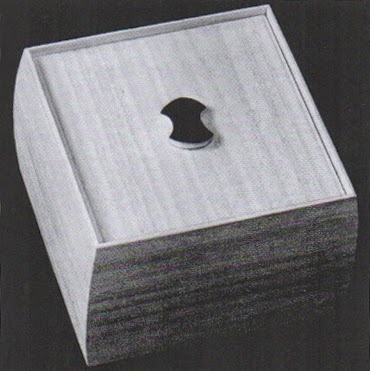Something I’ve always found fascinating and admirable about Japan is their painstaking attention to detail. I don’t think there is anything, any craft or art, they do in half measures.
Packaging was no exception.
First published in 1965 (with an English version 2 years later), Japanese graphic artist Hideyuki Oka, set out to chronicle older, and by that point disappearing, forms of packaging foodstuffs.
The items encased range from sake to miso to sushi to confectionaries and...eggs. Many of these would have been the efforts of simple merchants. Both to protect and transport the goods they sold, but also to give it a distinct visual presence. Very early, not quite corporate branding – market stall branding maybe. And the material used was often bamboo, rice straw, hemp twine, paper, and leaves. Beautiful examples of using the natural resources available. But, cloth and also more sophisticated pottery, baskets, and wooden boxes were used.
Bamboo is split to form the sticks that candies unique to Sendai are stuck on to. The holder is also bamboo.
Box made of Paulownia wood, with a polished bamboo knob, containing candies from Nagoya.
Oh come on! Sugarcoated beans from Mamemasa confectionery in Kyoto arranged in tiers in a diagonally cut cardboard box pasted over with decorative printed paper.
A wooden box containing a 15 inch sponge cake called kasutera. But check out that ribbon.
Dried flying fish from Miyagi Prefecture in northern Honshu. Strung together with straw, this allowed them to both dry and be conveniently stored, and then used as needed.
Anyone with an interest in packaging, basketry, box making, ceramics and pottery, Japanese arts and crafts, inventive uses of natural resources, and anyone with a sense of wonder, will find this book very appealing.
If I have a criticism of the book it’s that I wish the photos were in colour (but given that the photos date back more than fifty years, maybe not so surprising) and also that the descriptions were on the same page, rather than grouped together at the back. But in all, minor quibbles. Oh and there is no description of how to wrap five eggs. No how to of any kind. But again, many of the items photographed were by that time already artifacts of a by gone age. Oka was a chronicler of a historical practice, not an expert practitioner of these crafts.
(I originally enjoyed this book when I found it more than 25 years ago in the library of the city I grew up in. The memory of it had faded in that time and I was thrilled to find it again in the library of the city I now live in.)
If you were traveling by train in Japan, you could purchase tea at a train station, and this is how it would be served. The lid serves as a cup.
Now if someone could make something like this, about a liter in size, with a larger screw off cup on the top, and a nestled pot on the bottom, in aluminum, stainless steel or titanium, I would buy one and die a happy man.




















You know who could easily wrap five eggs like that? Stormdrane.
ReplyDeleteLOL. I’m sure he could. and he may just enjoy the challenge of figuring it out.
Delete